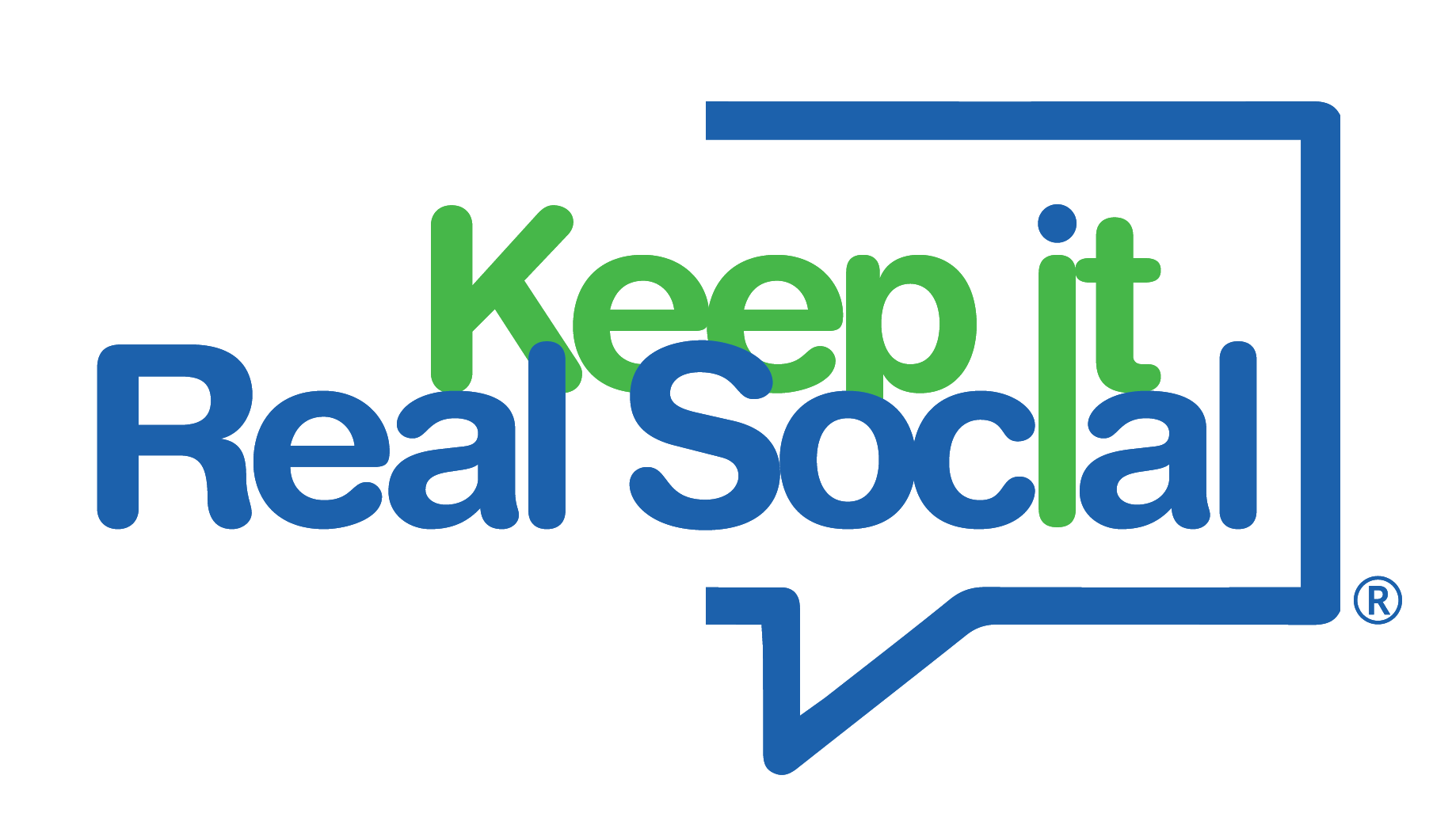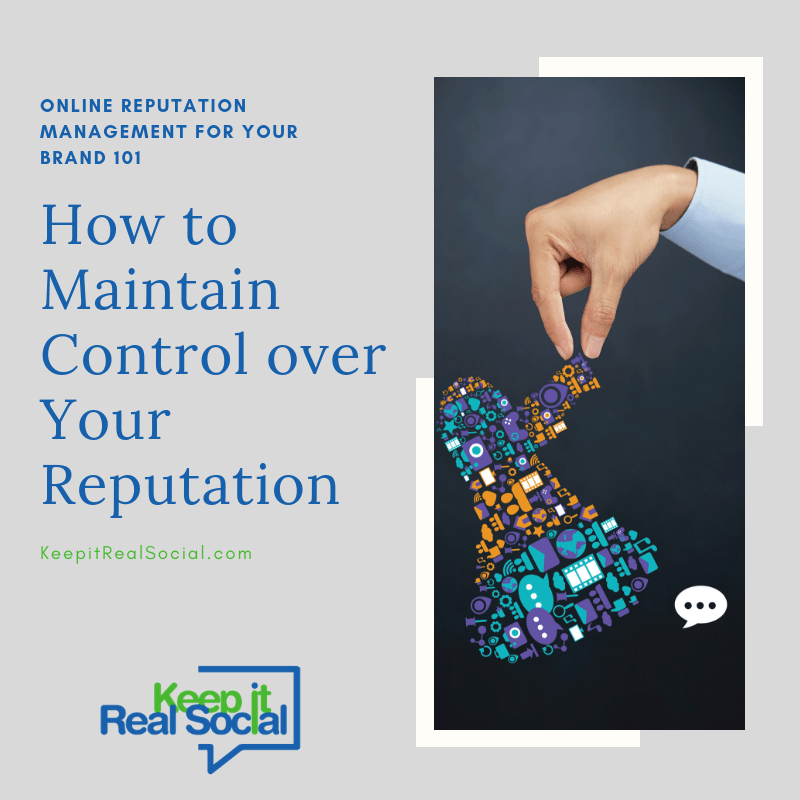Now that you have your plan for creating a good reputation online, you need to maintain control over it.
Controlling Social Media
Make sure that you have and maintain a profile on every social media platform your target audience uses. First, you need to find out which platforms they use.
Facebook is a pretty solid bet since hundreds of millions of people in all demographics and all over the world use it. One way to find out what social media sites your market uses is to conduct a survey of existing customers.
Another method is to create a customer persona and then make an educated guess. For example, if you’re in the fashion industry or another highly visual industry, there’s a good chance that your customers are on Pinterest and Instagram. If your customers are professionals, they’re probably on LinkedIn. News junkies or people who follow celebrities closely would probably be on Twitter. You can guess and then create a profile on these sites to see if you start gaining followers.
Keep in mind that for each social media site you use, you’ll need to be present there. This means checking in at least once per day and spending time posting content and interacting with people. Each profile requires maintenance, so try to focus only on a handful where your customers are most active. You can also delegate the responsibility of maintaining social media to a member of your team.
Each social media site has its own privacy settings. You should be aware of these and set yours accordingly. You should also check periodically for changes, as sites like Facebook often update their privacy settings to give users more control.
An example of a privacy concern is tagging. Facebook allows users to tag other users in their posts. The post then shows up on the tagged person’s timeline. This means that an upset customer could post negative content about you and tag you so that it appears on your timeline. Now anyone who looks at your profile sees this negative comment. Facebook allows you to control tagging in your privacy settings. You can set it so that you must approve any tagged content before it shows up on your profile.
If other members of your organization have administrative control, always keep tabs on what they post. They should understand your brand and know your protocols regarding posting on social media, but just in case they slip up or misunderstand, you need to see it and respond quickly.
Here are a few mistakes to avoid in controlling your social media presence:
Posting Negative Content
You should avoid posting any negative content or anything that could be negative. Never say anything bad about a client, customer, or business partner. This is brand suicide. Before you post anything, read it over to make sure it couldn’t be taken the wrong way. Also keep in mind that even if something is posted and then deleted, many people could have seen the post in the time it was up, and they could have even taken screenshots.
Too Much Information
Be careful about posting inappropriate personal photos or videos, or too much personal content. It’s okay to post personal content sometimes and, in fact, it can do great things for your brand. Some small business owners post pictures of their kids or pets and this resonates with their audience who may also be parents or pet owners. But it’s easy to cross the line and post too much personal content, personal content that’s irrelevant to your audience, or content that’s inappropriate.
The way to protect against this happening is to post personal content with caution and monitor results closely. You may post a picture of yourself hiking with your dog and it could become your hottest post to date. This tells you that your audience members like knowing about your dog and maybe some of them are dog owners. On the other hand, maybe you post a picture of yourself at a baseball game and you get no reaction. This tells you that your audience isn’t so interested in your hobby.
High Risk Situations
Identify high-risk situations where you’re more likely than usual to lose your filter and post something inappropriate. During these times, turn off or log out of social media. Don’t post content or get online to interact with your audience during these designated times. These times might include:
- When you’ve had a few drinks
- When you’re short on sleep
- When you’re in a hurry
- When you’re peeved about something or grumpy
- First thing in the morning when you haven’t really woken up
During these times, it’s best to stay off social media altogether. Even if you just want to read over your current updates, you might see something that triggers a response and tempts you to post it right now. If you’ve ever posted something you later regretted on social media, you’ll understand how important this is.
Inconsistent Presence
Don’t disappear on your social media followers. You should have a consistent presence, interacting every day with your audience. You might skip a day or two, but try not to disappear for long stretches of time. If you do this, you risk not being there to do damage control, if necessary, and you’ll lose momentum.
Control Your Website
Even if you don’t have a website now, you should register your business’s name as your domain name. You can register the name and ‘park’ the website with a placeholder page or basic information for the time being. If you don’t do this, someone else might. In recent years, political pranksters have created domain names for politicians and made them look stupid and unprepared. If someone takes your name, they could cause all kinds of problems.
Another reason you need to own your domain name is that the website is likely to appear at the top of the Google results page when someone searches for your name.
When you register your domain name, set up automatic renewal so that when it expires, you can keep it. This is especially important if you’re not actually using it. It’s easy to forget. Your web hosting service should offer automatic renewal as part of their service package.
Whichever site you’re using, you should also create a business email address with the domain of your website. It looks unprofessional when a business uses a free email like Yahoo or Hotmail. With your own business as your email address, you’ll look professional and legitimate. It engenders trust, which is important for people who are contacting your business for the first time.
Keep your personal and business email addresses separate. Don’t give out your personal email address. It’s important to have this barrier between you and the public. It’s dangerous to have your personal email out there on the Internet and it helps to maintain a good work-life balance. Do the same with any social media or chat IDs.
Here are some mistakes to avoid when controlling your website and email addresses.
Outrageous Claims
Look at the copy on your website. What claims does it make? Do your products and services deliver on these claims? A major cause of negative comments and reviews is a website that over-promises and then under-delivers. Your business should be at least meeting expectations and, if possible, exceeding them. If you fall short of your customers’ expectations, your reputation will suffer. Make sure your copy is good but also accurate.
No Contact Form
Make sure that your website offers a clear and simple way to contact you. Don’t bury your contact form at the bottom of your “Terms and Conditions” page. You should welcome questions and feedback from visitors to your website. Also, make sure the form leads to your inbox and that you’re checking it regularly. Treat your website just like your social media profiles and take care of comments and questions as quickly as possible.
Missed Maintenance
Even if you don’t post fresh content on your website, you should check its content regularly to make sure it’s current. If you have information on your site that’s not up to date, fix it as soon as possible. For the best results, you should post regular content on your site. Updating with regular content has SEO benefits and gives people a reason to check back. One good way to do this is to put a blog page on your site with a preview on the “Home” page. When people visit your site, they’ll see that you have news and other items on the blog page.
Inconsistent Content
Make sure that all your content on your blog, website, and social media sites conforms to your branding and brand message. More than anything else, your content will establish your reputation in the minds of your audience, especially for potential customers who haven’t bought anything from you yet. Make sure there’s nothing off-brand.
Include your logo or URL on all content so that people know it’s you. This will also prevent it from being copied somewhere else. This is part of your branding and it gives your content consistency, which lends you credibility.
Create a publication schedule and calendar to maintain control of what goes out, where, and when. Since your content broadcasts your brand across the world, you need to put it out consistently and regularly. Your constant stream of content will also help to obscure or diminish any negative content someone else publishes about you.
Here are some basic mistakes to avoid in your content strategy:
Inappropriate Content
Assume that any content you have that could be taken the wrong way will be. You may not intend to create offensive content but if even one person is offended, you can get yourself into trouble. It’s important to double-check everything before it goes out.
Some brands purposely create content that’s controversial, provocative, or offensive as part of their brand strategy. Do this only with the utmost caution. It may work for some target markets, but it will drive people away as well. If you want to post something a little provocative, monitor it closely in case it doesn’t go over well with your audience.
Ignoring Negative Comments
Think of a negative comment as a ticking time bomb. The longer you leave it out there and don’t reply to it, the more people see it and wonder where you’ve gone off to. Appearing unresponsive can hurt your online reputation. Deal with negative comments as soon as you’re able to (and there will be more on this in the next chapter).
Autopilot Publishing
Don’t schedule your content publishing using the automation feature and forget it. You need to be there running the ship, writing, publishing, and monitoring. This isn’t something you can do purely through automation. The Internet is full of faceless organizations and websites, and they definitely don’t have a good reputation or any staying power.



